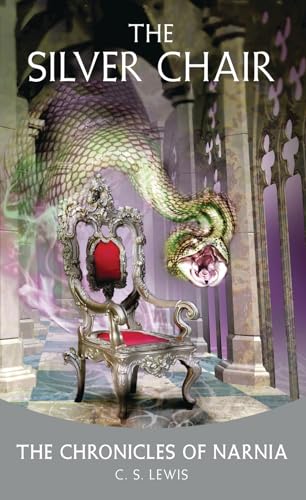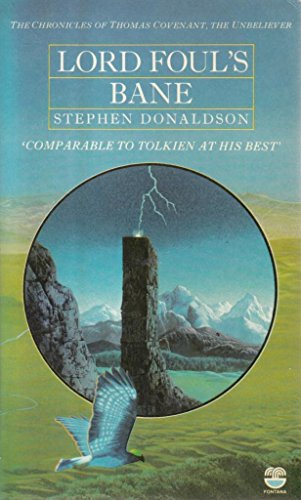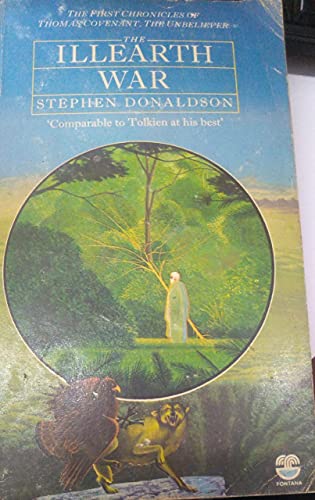Summary
The Silver Chair is the fourth published book in C. S. Lewis’s beloved Chronicles of Narnia series. The story follows two children, Eustace Scrubb and Jill Pole, who are whisked away from their dreadful boarding school, Experiment House, to the magical world of Narnia. There, they are tasked by the great lion Aslan with a crucial mission: to find and rescue the long-lost Prince Rilian, son of the now elderly King Caspian X.
Guided by four signs given to them by Aslan and accompanied by the gloomy but loyal Marsh-wiggle Puddleglum, the children embark on a perilous journey through the wild lands north of Narnia. They face numerous challenges, including encounters with unfriendly giants and a treacherous underground realm. Their quest leads them to the Underland, a subterranean kingdom ruled by the mysterious and enchanting Lady of the Green Kirtle.
In the Underland, they discover a young knight who is bound to a silver chair each night, supposedly to prevent him from turning into a dangerous serpent. The children and Puddleglum realise this knight is the enchanted Prince Rilian, held captive by the Lady of the Green Kirtle’s powerful magic. In a tense and pivotal scene, they must decide whether to free the knight despite his warnings, ultimately choosing to trust in Aslan’s signs and release him.
The Lady of the Green Kirtle, revealed to be a powerful witch, attempts to bewitch them all with her sorcery, nearly convincing them that Narnia and the Overworld do not exist. It is Puddleglum’s unwavering faith and courage that breaks the spell, leading to a final confrontation where the witch transforms into a deadly serpent. Together, they defeat the serpent, freeing Rilian from his enchantment and thwarting the witch’s plans to invade Narnia.
The adventurers escape the collapsing Underland and return to Narnia, where they reunite the aged King Caspian with his son just before the king’s death. The story concludes with Aslan allowing Caspian a brief visit to the children’s world before his final journey to Aslan’s country, symbolising the Christian concept of resurrection and eternal life.
Key themes:
- The power of faith and belief in the face of deception
- The importance of following divine guidance (Aslan’s signs)
- The struggle between good and evil
- Courage and perseverance in adversity
- The nature of truth and reality versus illusion
- Redemption and second chances
Character Details
Jill Pole
Jill is a young schoolgirl from Experiment House who finds herself thrust into the adventure in Narnia. Initially timid and prone to tears, Jill grows throughout the journey, developing courage and resilience. She is tasked with remembering Aslan’s signs but often struggles with this responsibility. Jill’s character arc showcases her transformation from a bullied, insecure girl to a brave and capable young woman who plays a crucial role in the quest’s success.
Eustace Scrubb
Eustace, who previously appeared in “The Voyage of the Dawn Treader”, returns as a much-improved character. Once a disagreeable and selfish boy, his previous experiences in Narnia have shaped him into a more courageous and considerate person. Eustace serves as a guide for Jill, helping her navigate the unfamiliar world of Narnia. His growth continues in this adventure as he faces new challenges and learns to work as part of a team.
Puddleglum
Puddleglum is a Marsh-wiggle, a unique Narnian creature known for pessimism and gloom. Despite his perpetually dour outlook, Puddleglum is steadfastly loyal and surprisingly brave. He acts as a guide and protector for Jill and Eustace, often providing comic relief with his gloomy predictions. Puddleglum’s finest moment comes when he resists the Lady of the Green Kirtle’s enchantment, demonstrating the power of faith and common sense in the face of deception.
Prince Rilian
The lost prince of Narnia, Rilian has been enchanted and held captive by the Lady of the Green Kirtle for ten years. When not bound to the silver chair, he appears as a courteous but somewhat haughty knight, unaware of his true identity. Rilian’s struggle against the witch’s enchantment and his eventual liberation represent themes of redemption and the triumph of good over evil.
The Lady of the Green Kirtle
Also known as the Queen of Underland, she is the primary antagonist of the story. Beautiful, seductive, and immensely powerful, she uses her magic to deceive and control others. The Lady of the Green Kirtle represents the allure of evil and the power of illusion. Her true form as a venomous serpent reveals her connection to the snake that killed Rilian’s mother, highlighting themes of revenge and the cyclical nature of evil.
Aslan
Though not physically present for much of the story, Aslan’s influence permeates the entire narrative. The great lion serves as a guide and source of wisdom, setting the children on their quest and providing them with the signs they need to succeed. Aslan represents divine guidance and ultimate good, often intervening at crucial moments to aid the protagonists.
Reader Fit
“The Silver Chair” would appeal to readers who enjoy classic fantasy adventures with deep moral and philosophical underpinnings. It’s particularly suited for:
- Young adults and children who appreciate imaginative storytelling and magical worlds
- Fans of Christian allegory and literature that explores themes of faith and morality
- Readers interested in character-driven narratives that showcase personal growth and redemption
- Those who enjoy quests and journeys filled with unique creatures and fantastical settings
- Anyone looking for a story that balances excitement and adventure with thoughtful exploration of deeper themes
CEFR Classification and Learning Suitability
Estimated CEFR Level: B1 (Intermediate)
The Silver Chair is a classic children’s fantasy novel with clear and accessible language, suitable for intermediate learners.
- Vocabulary: The vocabulary is simple and descriptive, typical of fantasy literature aimed at young readers.
- Grammar and Structure: Sentences are mostly simple and compound, maintaining a clear and straightforward narrative flow.
- Themes: The novel explores themes of bravery, friendship and perseverance, presented in an engaging and easy-to-understand way.
- Dialogue and Style: Dialogue is natural and easy to follow, contributing to the novel’s magical and adventurous atmosphere.
Recommendation:
This book is recommended for intermediate learners who enjoy classic fantasy with clear language and meaningful themes.
Quick Facts
- Genre: Children’s fantasy, Christian literature
- Publication Year: 1953
- Reading Time Estimate: 4-6 hours
- Notable Awards: While “The Silver Chair” itself didn’t win specific awards, the Narnia series as a whole has been highly acclaimed and influential in children’s literature.
Related Books
- “The Lion, the Witch and the Wardrobe” by C. S. Lewis (another book in the Narnia series)
- “The Hobbit” by J.R.R. Tolkien (a classic fantasy adventure with similar themes)
- “A Wrinkle in Time” by Madeleine L’Engle (another children’s fantasy with Christian undertones)


